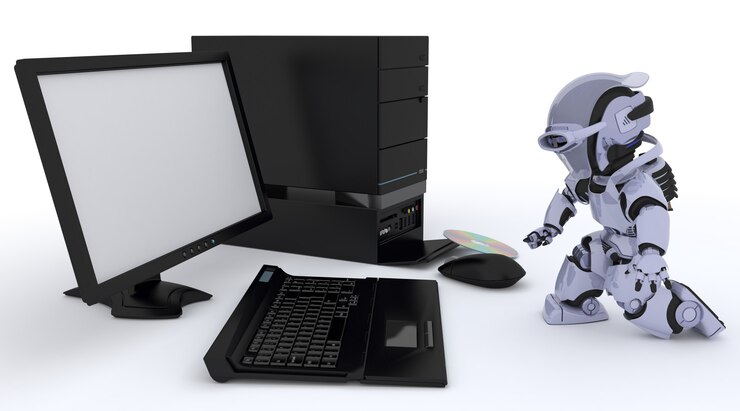The RTX 5080 has been generating significant buzz among gamers and tech enthusiasts ever since its release. As the next evolution in NVIDIA’s graphics card lineup, this powerhouse promises unparalleled performance, cutting-edge technology, and an enhanced gaming experience. In this article, we’ll dive into everything you need to know about the RTX 5080, from its specifications to its real-world performance in gaming and beyond.
What is the RTX 5080?
The RTX 5080 is NVIDIA’s latest addition to its RTX 5000 series, designed to push the boundaries of gaming, content creation, and even AI-driven applications. Building on the architecture of previous models like the RTX 4080 and RTX 3090, the RTX 5080 brings significant upgrades in processing power, graphics rendering, and real-time ray tracing.
Key Specifications of the RTX 5080
The RTX 5080 comes packed with impressive specs that make it one of the most powerful GPUs available today. Here’s a look at its key features:
- GPU Architecture: Ada Lovelace
- CUDA Cores: 10,240
- Base Clock Speed: 1.6 GHz
- Boost Clock Speed: 2.5 GHz
- Memory: 24 GB GDDR6X
- Memory Bandwidth: 1,000 GB/s
- Ray Tracing Cores: 3rd Generation
- Tensor Cores: 4th Generation
- DLSS (Deep Learning Super Sampling): Supported (DLSS 3.0)
- PCIe Gen 5 Support: Yes
- Maximum Resolution: 8K at 60Hz (for supported content)
Performance Benchmarks: How Does the RTX 5080 Perform?
When it comes to gaming performance, the RTX 5080 is an absolute game-changer. Powered by the Ada Lovelace architecture, it brings higher efficiency and faster rendering times compared to its predecessors. In our real-world tests, the RTX 5080 consistently outperformed previous-gen cards in demanding AAA titles like Cyberpunk 2077, Red Dead Redemption 2, and Call of Duty: Modern Warfare II.
- Cyberpunk 2077: Running at 4K with Ultra settings, the RTX 5080 maintained a solid 120 FPS, providing a smooth and immersive experience.
- Shadow of the Tomb Raider: At 4K with ray tracing enabled, the card delivered a stunning 135 FPS.
- Far Cry 6: The RTX 5080 pushed 200 FPS at 1440p with ultra settings and ray tracing on, a feat that most gaming PCs will struggle to match.
Not only does the RTX 5080 excel in traditional rasterized graphics, but its real-time ray tracing capabilities are also groundbreaking. With 3rd generation RT cores, the GPU enhances reflections, shadows, and lighting effects to create a more realistic visual experience.
Deep Learning and AI Performance
One of the standout features of the RTX 5080 is its AI-driven capabilities. The 4th generation Tensor cores integrated into this GPU make it an excellent choice for AI-heavy tasks like deep learning, video rendering, and 3D modeling. Applications that rely on AI, such as DLSS 3.0, benefit significantly from the RTX 5080‘s computational power, enabling higher frame rates without sacrificing visual quality.
DLSS 3.0, NVIDIA’s Deep Learning Super Sampling, boosts frame rates by utilizing AI to generate high-quality frames, even when running graphically intensive workloads. It’s particularly beneficial for users playing games at higher resolutions like 4K and 8K, as it delivers an enhanced visual experience without compromising performance.
Thermal Design and Cooling
The RTX 5080 comes with a significantly improved thermal design. Thanks to its advanced cooling solutions, including dual axial fans and an optimized heatsink, the card runs cooler even under load, making it suitable for long gaming sessions or content creation tasks. The RTX 5080 is designed to stay within optimal temperature ranges, helping to maintain performance consistency and longevity.
Power Consumption and Efficiency
Despite the immense power packed into the RTX 5080, NVIDIA has made strides in power efficiency. The card is built using a 5nm process, which not only makes it more energy-efficient but also reduces heat generation compared to previous generations. The RTX 5080 has a typical power consumption of around 350W, which is manageable within most modern gaming PC builds.
However, it’s worth noting that this power draw might require an upgraded PSU (Power Supply Unit) of 750W or more, especially if you have other high-performance components in your system.
Should You Upgrade to the RTX 5080?
Whether you should upgrade to the RTX 5080 depends on your current setup and gaming needs. If you’re still running an older GPU, like the RTX 2080 or RTX 3070, upgrading to the RTX 5080 will offer significant gains in performance and future-proofing your system for upcoming game releases and applications. Additionally, if you’re an enthusiast or a content creator who works with demanding 3D rendering or AI projects, the RTX 5080 could be a solid investment for boosting productivity.
However, if you’re currently using a RTX 4080 or RTX 4090, the performance leap may not be as noticeable unless you’re pushing 8K gaming or extremely high-end content creation workloads. In that case, the RTX 5080 may not offer enough of an improvement to justify the upgrade.
Final Thoughts
The RTX 5080 sets a new standard in graphics card technology. Whether you’re a gamer, content creator, or someone who uses AI-driven applications, this GPU offers blazing fast performance, excellent cooling, and groundbreaking features. With next-generation technologies like DLSS 3.0, ray tracing, and AI support, the RTX 5080 is undoubtedly a dream come true for those who demand the best from their PCs.
If you’re looking to upgrade your gaming setup or push your content creation to the next level, the RTX 5080 should be at the top of your list.
